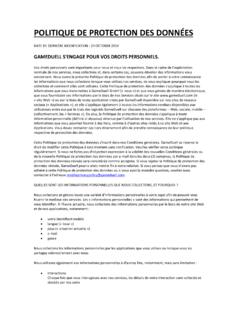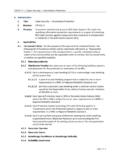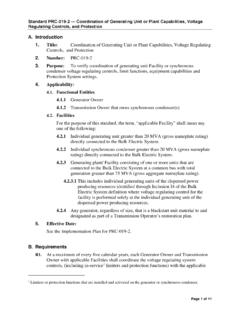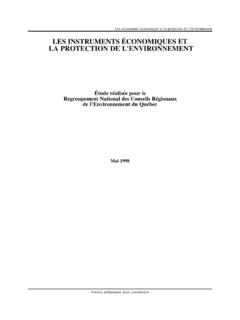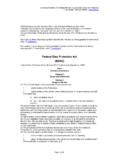Transcription of Textbook 1 Training - UNICEF
1 Textbook Understanding child traffickingInternationalLabourOffice1 Training MANUALTO FIGHT TRAFFICKING INCHILDREN FOR LABOUR,SEXUAL AND OTHER FORMSOF EXPLOITATION Training MANUAL TO FIGHT TRAFFICKINGIN CHILDREN FOR LABOUR, SEXUAL ANDOTHER FORMS OF EXPLOITATIONT extbook 1: Understanding child traffickingCopyright International Labour Organization 2009 First published 2009 Publications of the International Labour Office enjoy copyright under Protocol 2 of the Universal Copyright , short excerpts from them may be reproduced without authorization, on condition that the source is indicated. Forrights of reproduction or translation, application should be made to ILO Publications (Rights and Permissions), InternationalLabour Office, CH-1211 Geneva 22, Switzerland, or by email: The International Labour Office welcomes , institutions and other users registered with reproduction rights organizations may make copies in accordance with thelicences issued to them for this purpose.
2 Visit find the reproduction rights organization in your manual to fight trafficking in children for labour, sexual and other forms of exploitation/ International Labour Office,International Programme on the Elimination of Child Labour (IPEC). - Geneva: ILO, 2009 - 4 : 9789221220695 (kit); 9789221220701 (CD-Rom);ISBN: 9789221220718 (Book 1 Print), 9789221220725 (Book 1 Web PDF);ISBN: 9789221220732 (Book 2 Print); 9789221220749 (Book 2 Web PDF);ISBN: 9789221220756 (Book 3 Print); 9789221220763 (Book 3 Web PDF);ISBN: 9789221220770 (Exercise Book Print); 9789221220787 (Exercise Book Web PDF);ISBN: 9789221220794 (Facilitators Guide Web PDF);International Labour Office; ILO International Programme on the Elimination of Child Labourtrainers manual / teaching material / child trafficking / children / child labour / sexual exploitation - available in French:Manuel de formation sur la lutte contre la traite des enfants a des fins d'exploitation de leur travail,sexuelle ou autres, ISBN 978-92-2-222069-4 (Kit); 978-92-2-222079-3 (Facilitator's Guide), Geneva, 2009.
3 And in Spanish:Manual de formaci n para combatir la trata infantil con fines de explotaci n laboral, sexual y de otros tipos,ISBN 978-92-2-322069-3 (Kit); 978-92-2-322079-2 (Facilitator's Guide), Geneva, Cataloguing in Publication DataAcknowledgementsThis publication was developed by Dr June Kane, IPEC consultant, and Mr Hans van de Glind from IPEC Geneva for this publication was provided by , ILO-International Training Centre, and United States Department ofLabor (Project GLO/05/51/USA).This publication does not necessarily reflect the views or policies of the United States Department of Labor, nor does mentionof trade names, commercial products, or organizations imply endorsement by the United States designations employed in ILO publications, which are in conformity with United Nations practice, and the presentation ofmaterial therein do not imply the expression of any opinion whatsoever on the part of the International Labour Office concerningthe legal status of any country, area or territory or of its authorities, or concerning the delimitation of its responsibility for opinions expressed in signed articles, studies and other contributions rests solely with their authors.
4 Andpublication does not constitute an endorsement by the International Labour Office of the opinions expressed in to names of firms and commercial products and processes does not imply their endorsement by the InternationalLabour Office, and any failure to mention a particular firm, commercial product or process is not a sign of publications can be obtained through major booksellers or ILO local offices in many countries, or direct from ILO Publications,International Labour Office, CH-1211 Geneva 22, Switzerland. Catalogues or lists of new publications are available free of chargefrom the above address, or by email: visit our website: our website: : ILO. The photographs in this publication are for illustration purposes only. None of the children whose identity is revealedon the photos are victims of child inItalyPhoto composed byInternational Training Centre of the ILO - Turin, Italy3 ForewordTrafficking in human beings and, moreespecially, trafficking in children has beenhigh on the international agenda for morethan a decade.
5 The trafficking of children isa serious human rights violation. Onlyrecently, however, has the internationalcommunity recognized that child traffickingis also undeniably a labour most people are now aware thatchildren and women (and sometimes boysand men) are trafficked into the world scommercial sex trade, children s right to befree of exploitation is violated in many otherways. Children are frequently trafficked intolabour exploitation in agriculture, bothlong-term and on a seasonal basis. They maytoil in a variety of manufacturing industries,from large-scale sweatshops to small craftworkshops. In some parts of the world,children are exploited in mining or infisheries. Girls in particular are traffickedinto child domestic labour. Children are alsotrafficked into the militia and into armedgangs in conflict zones and, while this maynot strictly be labour , it is nevertheless truethat the children are effectively put to workin these situations, not only as soldiers but ina variety of jobs such as cooking, acting ascouriers and, for girls especially, providingsexual services to adult children are moved away from theirhomes and are exploited in the informaleconomy, where they are even more difficultto trace and at high risk of many forms ofviolence.
6 Criminal networks and individualsexploit children in begging, street hawking,car window cleaning and other street-basedactivities. Some children are exploited asdrug couriers or dealers or in petty crimesuch as pick-pocketing or of these activities may not immediatelybe seen as labour . The reality is, however, thatthey have a commercial motive and the child isseen by those seeking to make a profit fromtrafficking as easy prey to exploit. The samecommercial motive is at work in the specificcase of trafficking of babies for adoption and,although the element of labour might bemissing in this case, there are areas whereprogramme responses of ILO, UNICEF andother agencies might coincide; for example theregistration and monitoring of recruitmentagencies is important in anti-trafficking effortsand similarly the registration and monitoring ofadoption agencies is important in actions toprevent baby ILO has thorough experience in the worldof work.
7 Its unique tripartite structurefacilitates analysis and action that isanchored in the realities of labour marketsand structures. For almost a decade, ILO sInternational Programme on the Eliminationof Child labour (IPEC) and its partnerorganizations have worked to combat thetrafficking of children as a worst form ofchild labour and have built up considerableexpertise in the vital links between childtrafficking and labour exploitation. IPEC,together with the ILO s International TrainingCentre (ITC) in Turin, Italy, has pioneeredtraining for a broad range of actors involvedin combating child is the United Nations primaryagency focusing on the rights of children andapproaches trafficking as a serious violationof these rights. UNICEF s work in the area ofchild protection is based on the need tocreate a protective environment that willreduce children s vulnerability to beingtrafficked, as well as increasing theirprotection from other threats to the fullenjoyment of all their rights.
8 Work within theframework of the protective environment emphasizes the importance of prevention. Byworking to reinforce the protectiveenvironment for all children, UNICEF sapproach strives to reduce the vulnerabilityof children to abuse, violence andexploitation of all and UNICEF work together at manylevels, including through field operations andat the level of policy. They work withgovernments, workers and employers organizations, non-government organizations(NGOs), researchers and academics and arange of other anti-trafficking them, they work with families andcommunities, and with children themselves,in grassroots initiatives that strengthenresilience and mobilize strong and UNICEF both support the GlobalInitiative to Fight Human Trafficking( ). Under this initiative an ExpertGroup on Child Trafficking was created. Itacknowledged the existence of a range ofhandbooks and guidelines on childtrafficking, and identified the need todevelop Training tools.
9 The expert group ledby ILO and UNICEF - initiated the process ofdeveloping a comprehensive Training packageto fight trafficking in children. In developingthe package they have drawn from existingresources such as Combating trafficking inchildren for labour exploitation: A resourcekit for policy-makers and practitioners (ILO,2008), Guidelines on the protection of childvictims of trafficking ( UNICEF , 2006)and Combating child trafficking: Manual forparliamentarians (IPU and UNICEF , 2005)and a series of Training tools that IPEC developed with the ILO's InternationalTraining package is composed of three textbooksand an exercise book that target governments,workers organizations, employers organizations, and NGOs and internationalorganizations, and a facilitators guide for useby trainers and draft of this Training package was validatedduring a workshop in July 2008, by a rangeof experts in fighting child trafficking and intraining and communication.
10 These includedrepresentatives of the Council of Baltic SeaStates, ILO-IPEC, ILO-ITC, IOM, OHCHR,OSCE, Save the Children UK, Terre desHommes, UNICEF , UNICRI, UNODC, andUnion G n rale des Travailleurs. Further fieldtesting of the Training materials took place inthe Mekong sub-region with representativesof governments, and workers and employers organizations of Cambodia, China, Lao PDR,Malaysia, Thailand and Viet Nam, and duringa global Training in Turin with representativesof governments, workers organisations andNGOs from across the putting together this Training manual andthe related guide for facilitators we aim tomake a valuable contribution to the work ofgovernments, workers and employers organizations, international organizations andNGOs in ending child MANUAL TO FIGHT TRAFFICKING IN CHILDREN FOR LABOUR, SEXUAL AND OTHER FORMS OF EXPLOITATION4 Michele JankanishDirector IPECILON icolas AlipuiDirector of Programme DivisionUNICEFD oris BuddenbergSenior of of.










